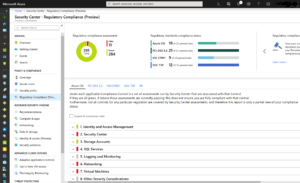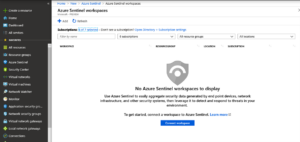This study guide should help you understand what to expect on the exam and includes a summary of the topics the exam might cover and links to additional resources. The information and materials in this study guide should help you focus your studies as you prepare for the exam.
Audience profile
This exam is designed for candidates who need to validate foundational level knowledge of cloud services and how those services are provided with Microsoft Azure.
The exam is intended for candidates who are just beginning to work with cloud-based solutions and services. Candidates must be prepared to demonstrate a fundamental understanding of cloud concepts, Azure services, Azure workloads, security and privacy in Azure, as well as Azure pricing and support. Candidates should be familiar with the concepts of networking, storage, compute, application support, and application development.
This exam can be taken as a precursor to other Microsoft certifications, such as Azure Administrator. While it would be a beneficial first step, taking this exam is not a prerequisite before taking any other Azure-based certifications.
Skills measured
- Describe cloud concepts (20-25%)
- Describe core Azure services (15-20%)
- Describe core solutions and management tools (10-15%)
- Describe general security and network security (10-15%)
- Describe identity, governance, privacy and compliance (20-25%)
- Describe Azure cost management and Service Level Agreements (10-15%)
Exam Study Guide
Describe cloud concepts (20-25%)
Identify the benefits and considerations of using cloud services
- Identify the benefits of cloud computing, such as high availability, scalability, elasticity, agility, and disaster recovery
- Identify the differences between Capital Expenditure (CapEx) and Operational Expenditure (OpEx)
- Describe the consumption-based model
Describe the differences between categories of cloud services
- Describe the shared responsibility model
- Describe Infrastructure-as-a-Service (IaaS)
- Describe Platform-as-a-Service (PaaS)
- Describe serverless computing
- Describe Software-as-a-Service (SaaS)
- Identify a service type based on a use case
Describe the differences between types of cloud computing
- Define cloud computing
- Describe public cloud
- Describe private cloud
- Describe hybrid cloud
- Compare and contrast the three types of cloud computing
Describe core Azure services (15-20%)
Describe the core Azure architectural components
- Describe the benefit and usage of Regions and Region Pairs
- Describe the benefit and usage of Availability Zones
- Describe the benefit and usage of Resource Groups
- Describe the benefit and usage of Subscriptions
- Describe the benefit and usage of Management Groups
- Describe the benefit and usage of Azure Resource Manager
- Explain Azure resources
Describe core resources available in Azure
- Describe the benefits and usage of Virtual Machines, Azure App Services, Azure Container Instances (ACI), Azure Kubernetes Service (AKS), and Windows Virtual Desktop
- Describe as the benefits and usage of Virtual Networks, VPN Gateway, Virtual network peering, and Express Route
- Describe the benefits and usage of Container (Blob) Storage, Disk Storage, File Storage, and storage tiers
- Describe the benefits and usage of Cosmos DB, Azure SQL Database, Azure Database for MySQL, and Azure Database for PostgreSQL, and SQL Managed Instance
- Describe the benefits and usage of Azure Marketplace
Describe Core Solutions and Management Tools on Azure (10-15%)
Describe core solutions available on Azure
- Describe the benefits and usage of IoT Hub, IoT Central, and Azure Sphere
- Describe the benefits and usage of Azure Synapse Analytics, HDInsight, and Azure Databricks
- Describe the benefits and usage of Azure Machine Learning, Cognitive Services, and Azure Bot Service
- Describe the benefits and usage of serverless computing solutions that include Azure Functions and Logic Apps
- Describe solutions for software development including Azure DevOps, GitHub, GitHub Actions, and Azure DevTest Labs
Describe Azure management tools
- Describe the functionality and usage of the Azure Portal, Azure PowerShell, Azure CLI, Cloud Shell, and Azure Mobile App
- Describe the functionality and usage of Azure Advisor
- Describe the functionality and usage of Azure Resource Manager (ARM) templates
- Describe the functionality and usage of Azure Monitor
- Describe the functionality and usage of Azure Service Health
Describe General Security and Network Security Features (10-15%)
Describe Azure security features
- Describe basic features of Azure Security Center, including policy compliance, security alerts, secure score, and resource hygiene
- Describe the functionality and usage of Key Vault
- Describe the functionality and usage of Azure Sentinel
- Describe the functionality and usage of Azure Dedicated Hosts
Describe Azure network security
- Describe the concept of defense in depth
- Describe the functionality and usage of Network Security Groups (NSG)
- Describe the functionality and usage of Azure Firewall
- Describe the functionality and usage of Azure DDoS protection
Describe Identity, Governance, Privacy, and Compliance Features (20-25%)
Describe core Azure identity services
- Explain the difference between authentication and authorization
- Define Azure Active Directory
- Describe the functionality and usage of Conditional Access, Multi-Factor Authentication (MFA), and Single Sign-On (SSO)
Describe Azure governance features
- Describe the functionality and usage of Role-Based Access Control (RBAC)
- Describe the functionality and usage of Azure Policy
- Describe the functionality and usage of resource locks
- Describe the functionality and usage of tags
- Describe the functionality and usage of Azure Blueprints
- Describe the Cloud Adoption Framework for Azure
Describe privacy and compliance resources
- describe the Microsoft core tenets of Security, Privacy, and Compliance
- describe the purpose of the Microsoft Privacy Statement, Online Services Terms (OST) and Data Protection Amendment (DPA)
- describe the purpose of the Trust Center
- describe the purpose of the Azure compliance documentation
- describe the purpose of Azure Sovereign Regions (Azure Government cloud services and Azure China cloud services)
Describe Azure cost management and Service Level Agreements (10-15%)
Describe methods for planning and managing costs
- identify factors that can affect costs (resource types, services, locations, ingress and egress traffic)
- identify factors that can reduce costs (reserved instances, reserved capacity, hybrid use benefit, spot pricing)
- Describe the functionality and usage of the Pricing calculator and the Total Cost of Ownership (TCO) calculator
- describe the functionality and usage of Azure Cost Management
Describe Azure Service Level Agreements (SLAs) and service lifecycles
- describe the purpose of an Azure Service Level Agreement (SLA)
- identify actions that can impact an SLA (i.e. Availability Zones)
- describe the service lifecycle in Azure (Public Preview and General Availability)


